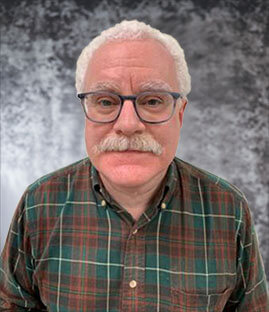Optics in metrology refers to the science and technology for measurements that use light. These techniques have been driving the development of the physical sciences, forming the backbone of problem-solving.
Learn more about the role of optics in metrology.
What Is Optical Metrology?
Optical metrology is the science and technology concerning measurements using light.[1] Such measurements can either target properties of light and light sources or properties of objects such as dimensions, distances, and temperatures.
Some examples of optical metrology include:
- Optical distance measurements with lasers based on interferometers or measurements of the time-of-flight of light pulses
- Highly precise angular measurements with autocollimators, particularly based on lasers
- Optical time-domain reflectometers used for inspecting fiber-optic links
- Optical profilometers for measuring surface topographies for semiconductor chip product or quality control in optical fabrication
- Optical powers can be measured with thermal power meters, photodiodes, or other equipment
- Optical irradiance and other illumination measurements can address physical quantities like optical intensity or perceived brightness
- Optical frequency metrology concerns high-precision measurements of optical frequencies to produce ultraprecise optical clocks
- Optical temperature sensors are based on the analysis of thermal emissions of hot bodies
- Fiber-optic temperature and strain sensors allow for distributed sensing of temperature and strain combined, such as for industrial processing plants or buildings
Metrology uses a wide range of instruments, including special calibration light sources that provide light with properties like luminance, wavelength, or optical power.
Qualities and Challenges of Optical Metrology
Optical metrology is highly precise and limited by quantum noise or laser noise. These measurements are rapid and suitable for monitoring industrial production processes. Overall, optical measurements are non-destructive and allow measurements of sensitive parts using non-contact methods that reduce the risk of damage.
With high-precision measurements, optical metrology can become challenging. For example, sophisticated metrology is necessary for characterizing large optics. In these cases, traditional techniques may not be suitable.
Image Formation in Optical Metrology
Optical metrology methods form images for processing.[2] This is essential to reconstruct quantities.
In most interferometric metrological methods, the image is formed by the coherent superposition of the object and reference beam. Because of this, the intensity is modulated by a harmonic function, which leads to bright and dark contrasts. This is known as a fringe pattern.
In most cases, the phase is the primary quantity of the fringe pattern to be retrieved as it relates to the final object quantities of interest, such as mechanical displacement, surface shape, 3D coordinates, and derivations. Related techniques include photoelasticity, holographic interferometry, classical interferometry, and digital holography.
The image formation processes for typical optical metrology methods include:
Photoelasticity
This is a non-destructive, full-field optical metrology technique for measuring the stress developed in transparent objects under loading. Photoelasticity is based on the optomechanical property of double refraction in transparent polymers. The loaded photoelastic sample is combined with circular polarizers and illuminated with a light source to produce fringe patterns whose phases are associated with the difference in stresses on a plane perpendicular to the light propagation direction.
Holographic Interferometry
Holography is a technique that records an interference pattern and uses diffraction to reproduce a wavefront, creating a 3D image with depth and parallax. As an optical metrology tool, holographic interferometry uses a wavefront stored in a hologram and interferometrically compared with another to produce fringe patterns that yield quantitative information about the object’s surface. This can be produced real-time, double-exposure, and time-average for qualitative visualization and quantitative measurement.
Classical Interferometry
With classic interferometry, the fringe pattern is formed by the superimposition of two smooth coherent wavefronts, one of which is typically a flat or spherical reference wavefront. The other is a distorted wavefront formed and directed by optical components. The fringe pattern’s phase reflects the difference between the ideal reference wavefront and object wavefront.
Digital Holography
This technique uses a digital camera to record the hologram produced by the interference between a reference wave and an object wave emanating from the sample. In contrast to classical interferometry, the sample may not be precisely in-focus and may be recorded without imaging lenses. Fresnel transform or angular spectrum algorithm allows digital refocusing at any sample depth without physically adjusting it. Digital holography also offers a simple option for double-exposure and time-averaged holographic interferometry without quantitative evaluation of holographic interferograms and flexible phase-aberration compensation.
Optical Metrology at Apollo Optical Systems
All optical components have desired specifications that are critical to the larger project’s functionality. Apollo Optical Systems uses a range of metrology equipment to confirm the quality of optical components and confirm parameters. Contact us today to discuss your custom optics project!
Sources:
[1] https://www.rp-photonics.com/optical_metrology.html [2] https://www.nature.com/articles/s41377-022-00714-xAbout Dale Buralli
Dr. Dale Buralli has served as the Chief Scientist for Apollo Optical Systems since 2003. In this role, Dr. Buralli is responsible for the design and optical modeling of various optical systems. These systems include virtual or augmented reality, ophthalmic and other imaging or illumination systems. Additionally, he provides support for optical tooling of lens molds and prototypes, including the development of custom software for both production and metrology. Dr. Buralli got his Ph.D. in optics from the University of Rochester in 1991. Now he is an Adjunct Professor of Optics at the University of Rochester’s Institute of Optics.

